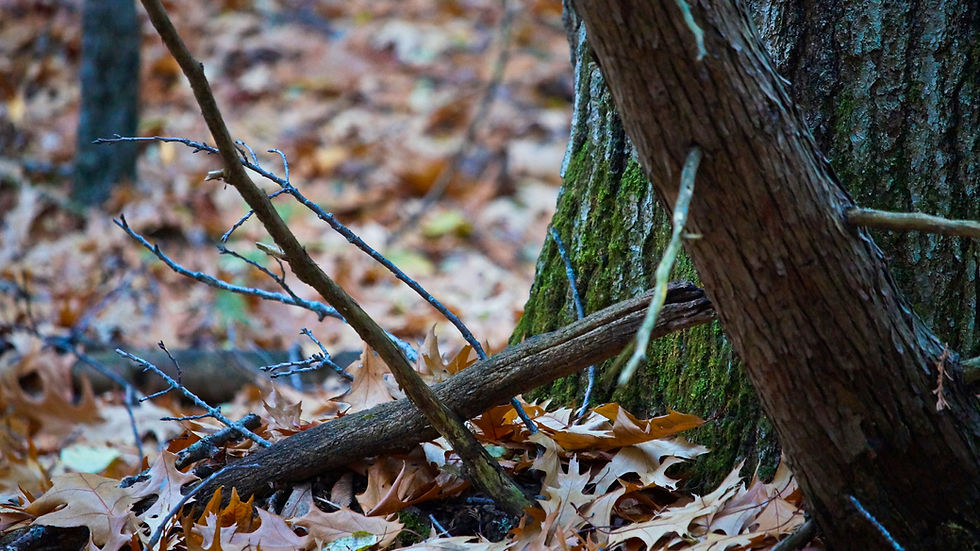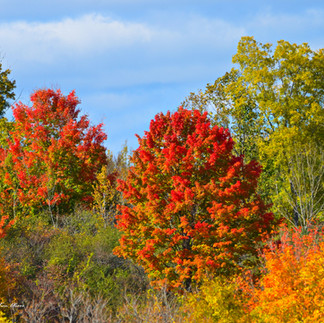Capturing the Beauty of Autumn Landscapes
- Ken Oliver
- Aug 4
- 4 min read
Updated: Sep 4
Understanding Your Camera Settings
Before stepping outside, familiarize yourself with your camera's settings. Understanding how to effectively use these settings can drastically improve your photos.
ISO Settings: In autumn, the natural light can vary significantly. Start with an ISO of 100-200 on sunny days for clarity. If it’s cloudy or nearing dusk, increase the ISO to 400 or 800 to keep the images bright without too much noise.
Aperture: A wider aperture (lower f-stop number like f/2.8 or f/4) can help create a beautiful background blur, making your main subject pop. For landscapes, you might want to use a smaller aperture (higher f-stop like f/8 or f/11) to keep the entire scene sharp.
Shutter Speed: Autumn can be breezy. Using a faster shutter speed (1/250 or faster) can freeze the motion of leaves. If you're capturing a waterfall or stream, try slower speeds (1/30 or slower) to create that silky water effect.
Shoot in RAW: Whenever possible, shoot in RAW format. This gives you the flexibility to adjust exposure and colors in post-processing without degrading image quality.

Composition Basics
Composition is key to creating visually appealing images. Here are a few techniques to consider:
Rule of Thirds: Imagine dividing your frame into a 3x3 grid. Place your main subject along these lines or at their intersections to make the photo more dynamic.
Leading Lines: Use natural lines in the environment, like roads, rivers, or tree lines, to lead the viewer's eye toward the subject.
Framing: Use natural elements like branches or archways to frame your subject. This technique adds depth to the photo and draws attention to the focal point.
Wide Shots vs. Close-ups: Don’t just stick to wide landscapes; get close to interesting details like a single fallen leaf, dew on grass, or textured bark. Close-ups highlight the beauty that might easily be overlooked.

Lighting Considerations
Good lighting can make or break a photo. Here are some tips for utilizing light effectively during autumn:
Golden Hour: Shoot during the golden hour, which is the hour after sunrise and the hour before sunset. The warm, soft light during this time enhances the rich colors of autumn.
Backlighting: Position the sun behind your subject. This can create a lovely glow through the leaves, emphasizing their colors and shapes. Don’t be afraid to experiment with silhouettes.
Avoid Harsh Midday Sun: If you must shoot during midday, try finding shaded areas or shoot under cloud cover to avoid harsh highlights and shadows.
Weather Conditions: Don’t shy away from overcast days. Clouds act as a natural diffuser that softens the light, bringing out colors beautifully. A misty morning can add a magical element to your images.
Making the Most of Fall Colors
Autumn offers a wide palette of colors that can make your images pop if captured correctly.
Focus on Color: Pay attention to complementary colors. The vibrant oranges and reds of leaves can be contrasted against cooler blues and greens in the background.
Use Filters: A polarizing filter can enhance colors and reduce glare. It makes the blue sky more vivid and helps create striking contrasts with the warm colors of fall.
Post-Processing: Don’t forget about editing! Use post-processing software to enhance colors and tones. Make subtle adjustments to saturation and contrast to achieve the look you desire.
Seasonal Changes: Throughout autumn, the landscape changes rapidly as leaves turn color and fall. Visit the same location multiple times to capture these transformations in different lighting and stages.

Exploring Different Locations
Finding the right location for your autumn photos can greatly enhance your compositions. Here are some ideas:
Parks and Nature Reserves: Visit local parks that showcase various types of trees. They usually have designated trails to explore beautiful landscapes.

Hiking Trails: If you're up for an adventure, hiking trails often lead you to stunning vistas, providing wide shots of the autumn landscape.
Rivers and Lakes: Water features can reflect the stunning colors of autumn foliage. Early mornings can offer mist rising off the water, giving your photos a mystical quality.
Urban Areas: Don't overlook cities during fall. Urban parks lined with trees can present a beautiful contrast with city architecture, giving unique perspectives on seasonal changes.
Visit Multiple Locations: Each site can offer a different color palette and scene. Spend time in various spots like mountains, forests, and lakeshores to diversify your portfolio.
Encouragement for New Photographers
Taking great autumn photos takes practice, and as a beginner, it's vital to remember that every shot is a learning opportunity.
Experiment: Don’t be afraid to try different angles and settings. Sometimes the most unexpected shots turn out the best!
Join a Community: Joining local photography groups or online forums can provide tips, inspiration, and even feedback on your work.
Be Patient: Sometimes, the light and colors might not be perfect. Patience is key; wait for the right moment, and take your time to compose your shots carefully.
Stay Inspired: Follow other photographers who specialize in nature and seasonal photography. Study their techniques and challenges to gain more insights into your own work.
Getting out there and capturing the beauty of autumn landscapes can be incredibly rewarding. With these tips, you’ll feel more confident and prepared to explore your surroundings and take stunning photographs. Remember, every click of the shutter is a step toward improving your skills. So grab your camera, embrace the splendor of autumn, and have fun capturing the beauty that surrounds you!












Comments